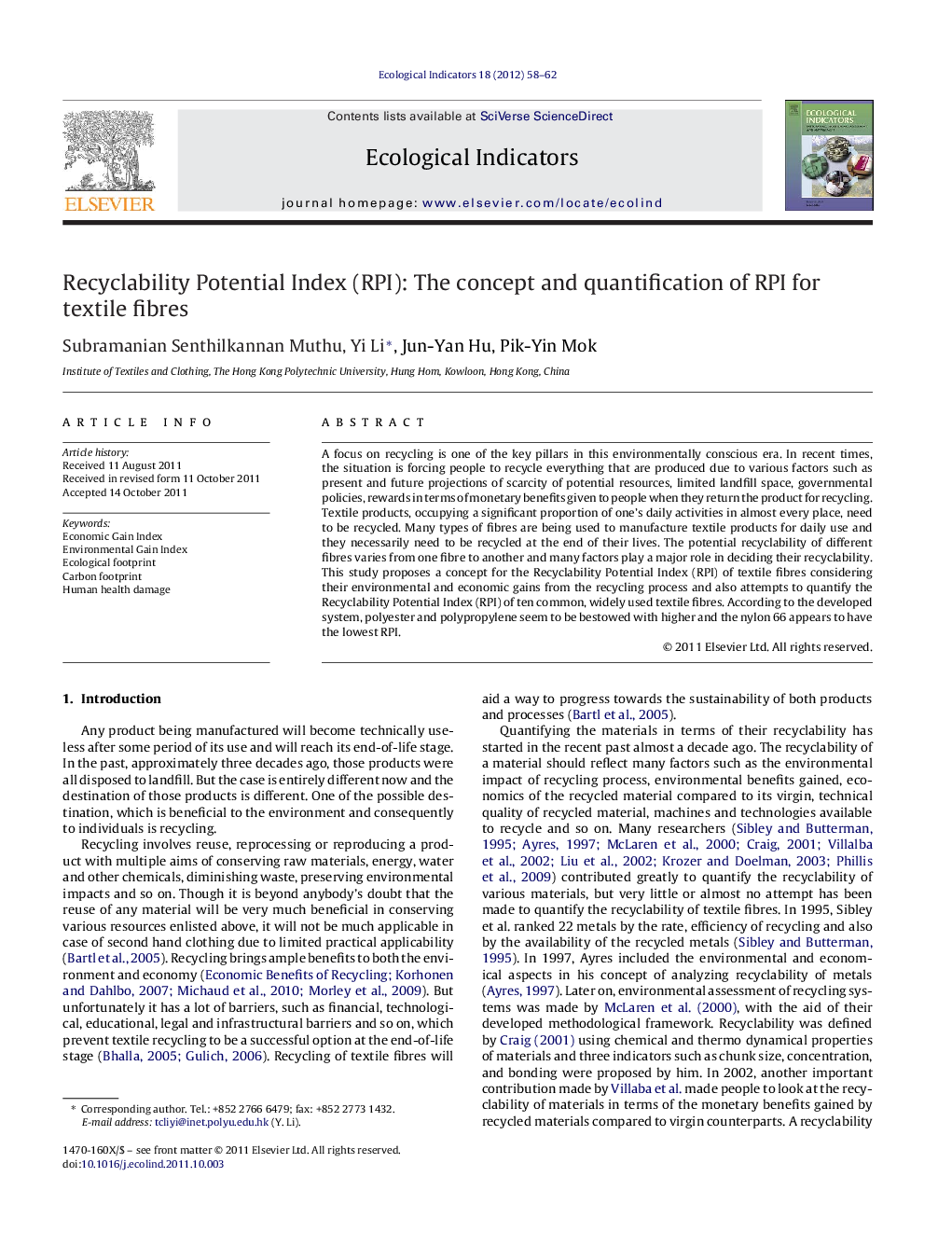| Article ID | Journal | Published Year | Pages | File Type |
|---|---|---|---|---|
| 4373760 | Ecological Indicators | 2012 | 5 Pages |
A focus on recycling is one of the key pillars in this environmentally conscious era. In recent times, the situation is forcing people to recycle everything that are produced due to various factors such as present and future projections of scarcity of potential resources, limited landfill space, governmental policies, rewards in terms of monetary benefits given to people when they return the product for recycling. Textile products, occupying a significant proportion of one's daily activities in almost every place, need to be recycled. Many types of fibres are being used to manufacture textile products for daily use and they necessarily need to be recycled at the end of their lives. The potential recyclability of different fibres varies from one fibre to another and many factors play a major role in deciding their recyclability. This study proposes a concept for the Recyclability Potential Index (RPI) of textile fibres considering their environmental and economic gains from the recycling process and also attempts to quantify the Recyclability Potential Index (RPI) of ten common, widely used textile fibres. According to the developed system, polyester and polypropylene seem to be bestowed with higher and the nylon 66 appears to have the lowest RPI.
▸ Recyclability Potential Index (RPI) of ten textile fibres was quantified by a model. ▸ Quantification considered environmental and economic impacts of the recycling process. ▸ This article has ranked ten important textile fibres in terms of their recyclability. ▸ Polyester and polypropylene topped all the fibres in terms of their recyclability.
